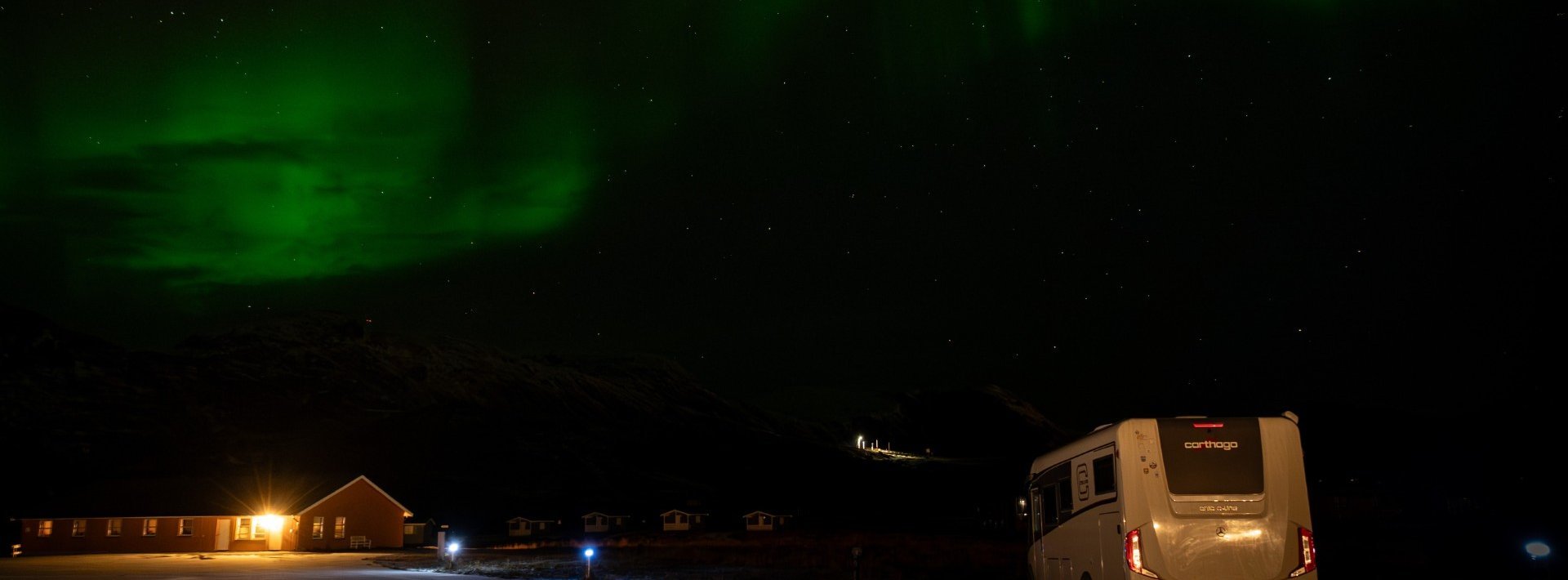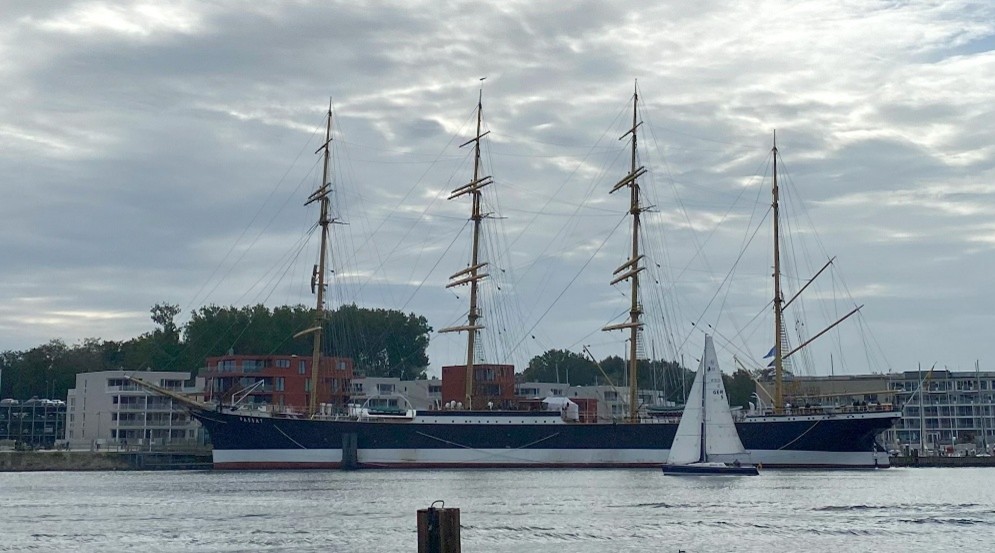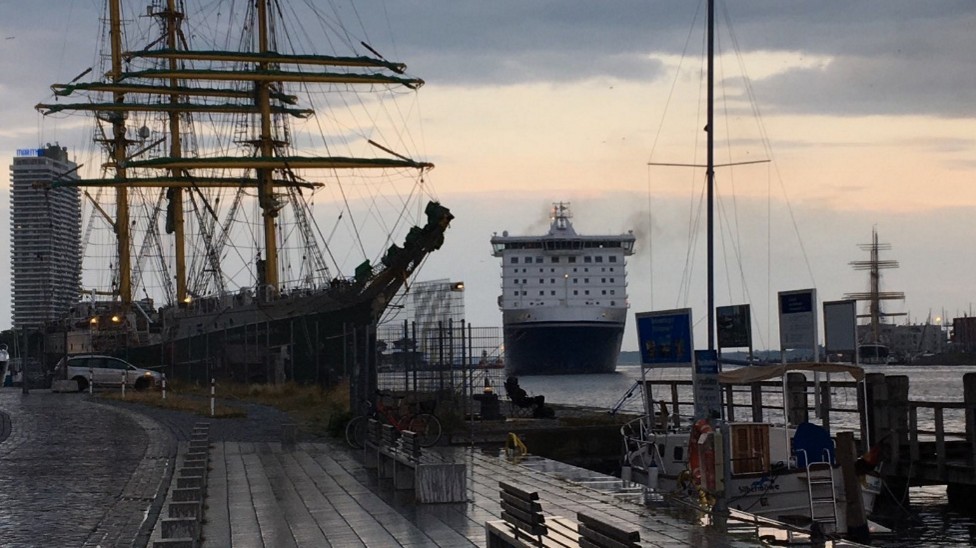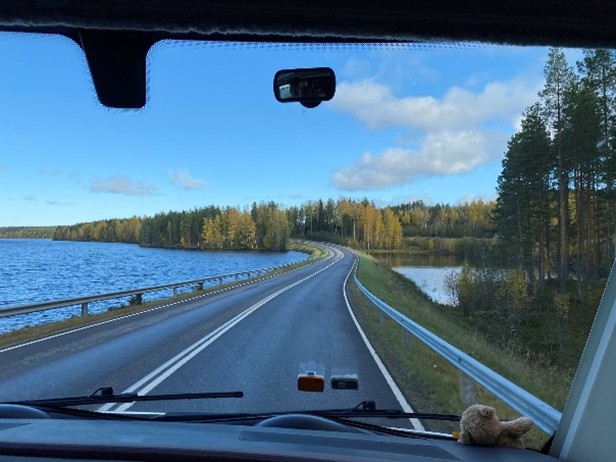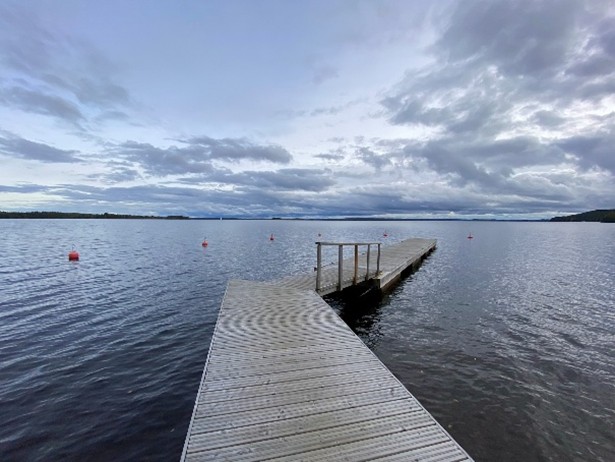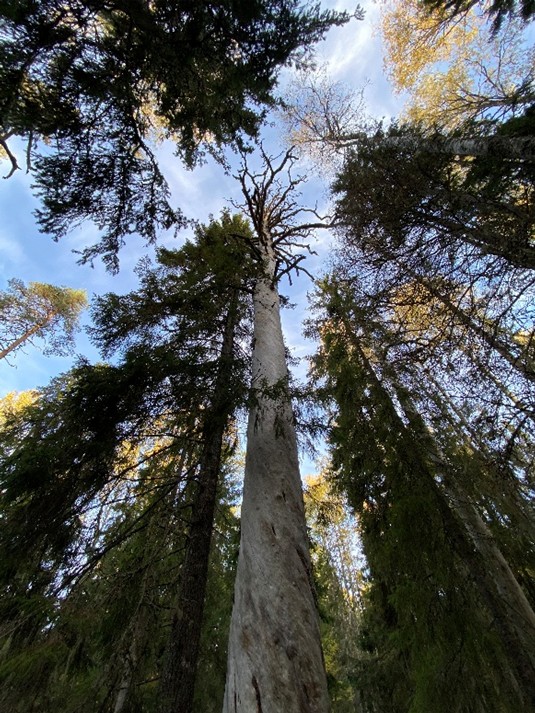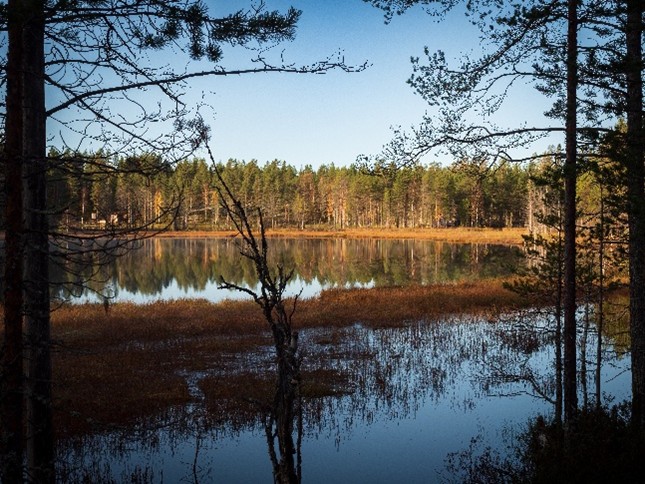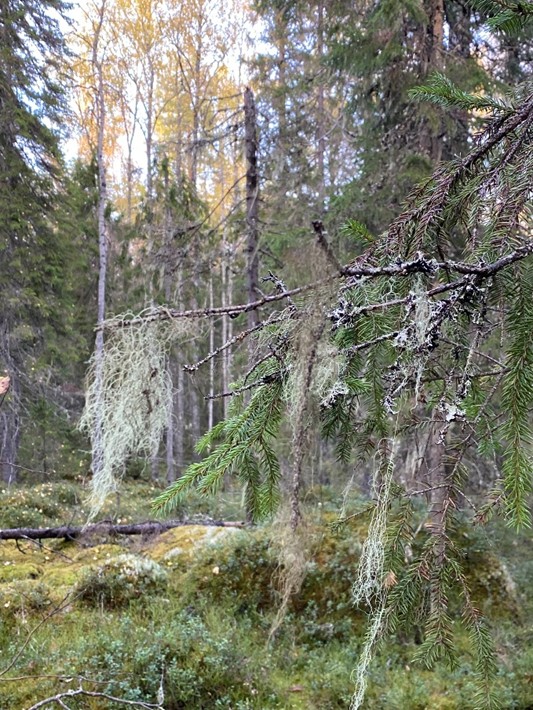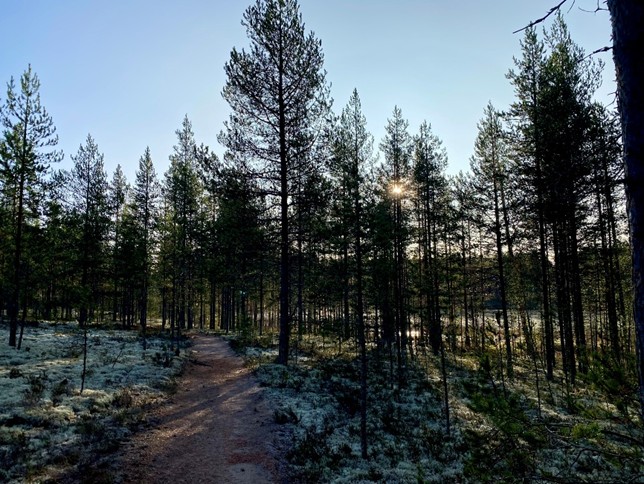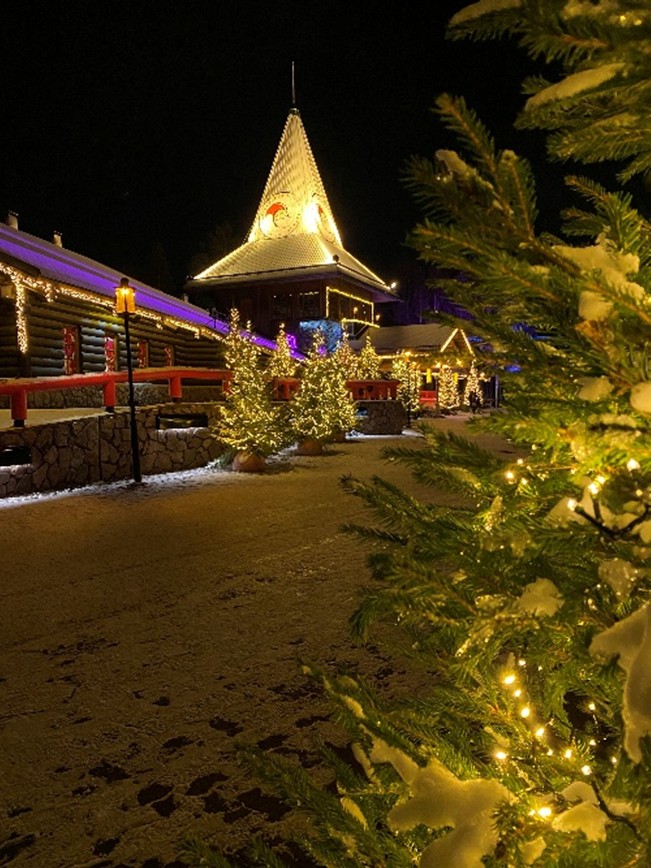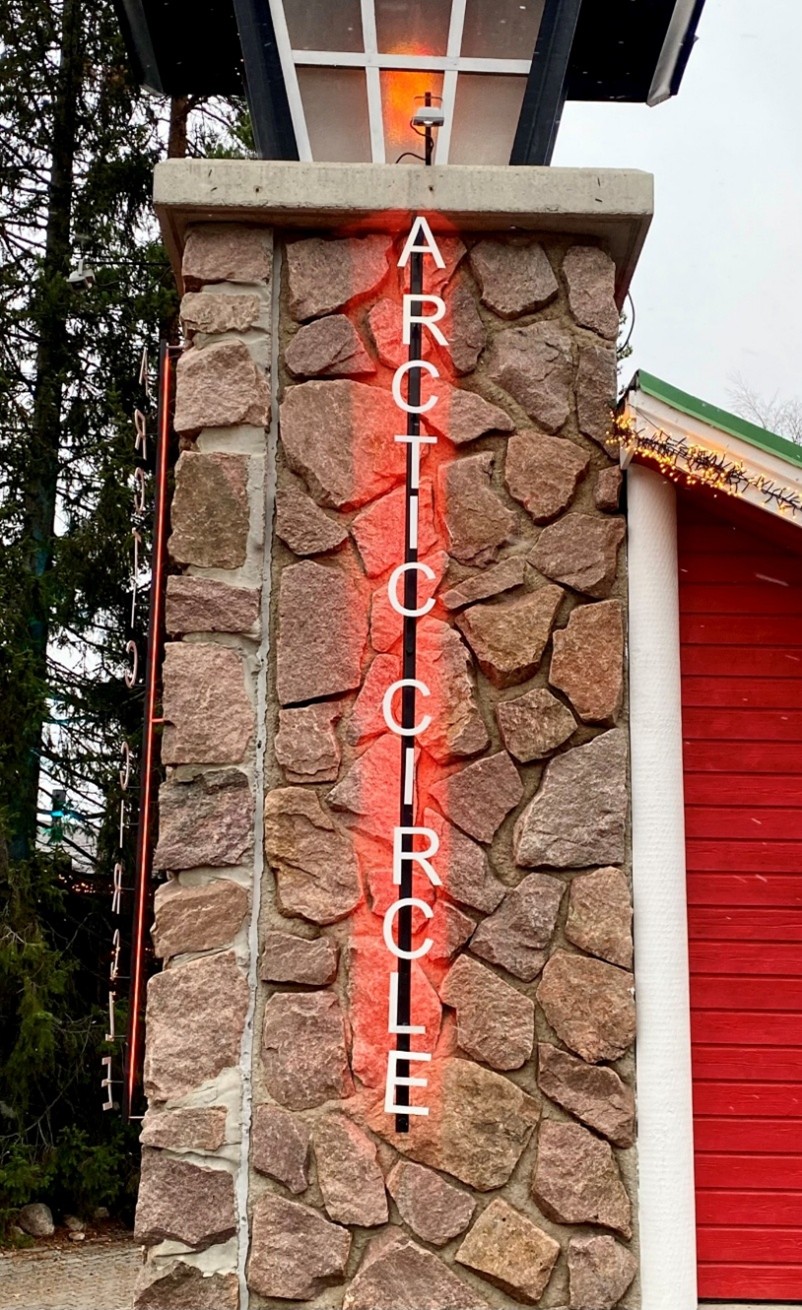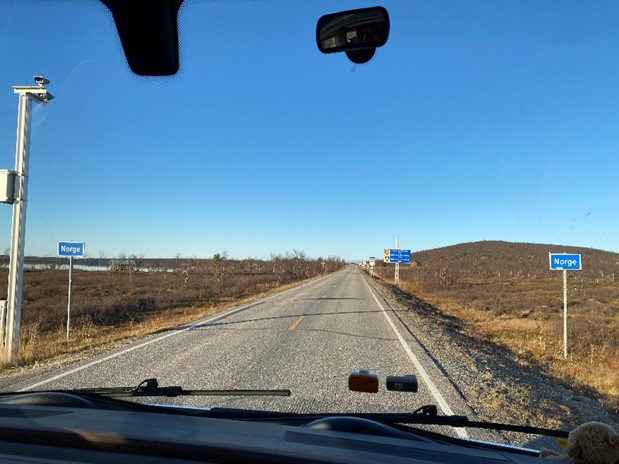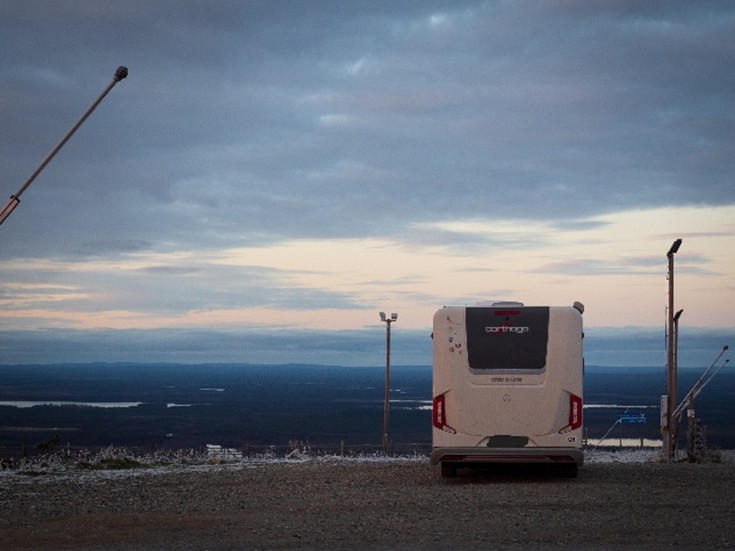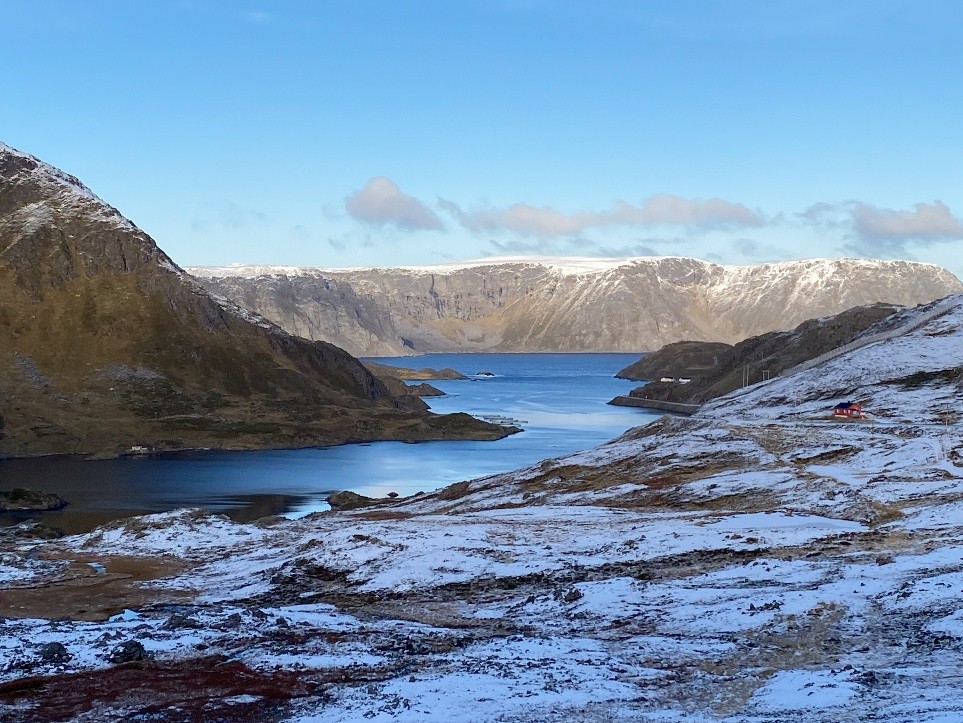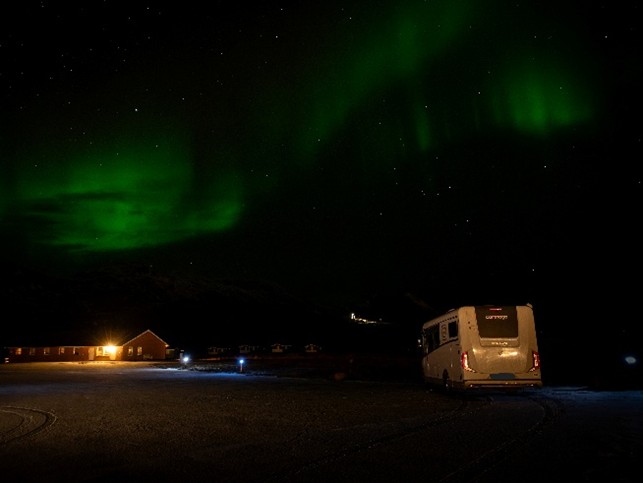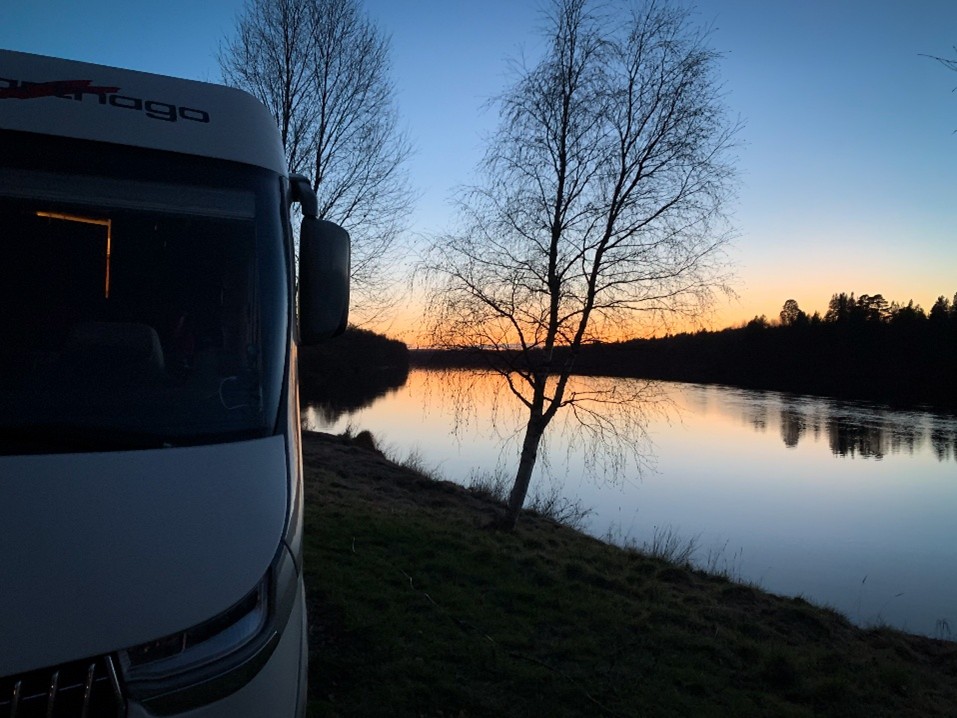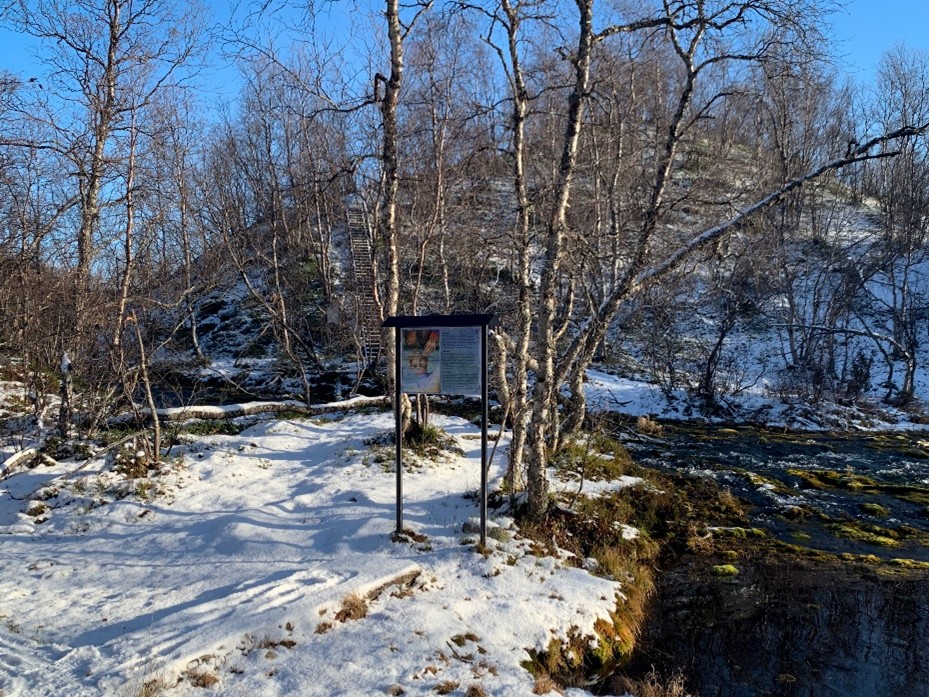FINLAND IN AUTUMN
Our customer Ulli was once again travelling with his family. This time in Finland. In his latest travel report, he gives us an insight into his trip and shows us why it's worth travelling there even in the colder months.
Having already visited Finland once in summer, this time we are drawn there in autumn - in the hope of experiencing dark nights with the chance of seeing the Northern Lights instead of endless summer days. The first three weeks of October are planned.
"We", that's my wife and I, our two daughters (aged five and eight at the time of the trip) - and our Carthago chic c-line I 4.9 LE.
As last time, we used the Finnlines ferry from Travemünde to Helsinki: departure at night, a relaxed day at sea and finally arrival the following day.
Travemünde - Preliminary round with sea breeze
Before we get on board, we first have to travel through Germany. We plan a buffer day in Travemünde - in case the journey takes longer and because the little town is worth dedicating some time to.
We spend the night on the official pitch near the harbour (not to be confused with the ferry port). From here you can walk to the waterfront promenade with its small shops, cafés and restaurants. There is also a branch of Café Niederegger and Gosch Sylt. From the promenade you have a marvellous view of the Trave, see large Baltic Sea ferries arriving and departing and finally reach the wide beach towards the estuary with the towering Hotel Maritim, Travemünde's most striking landmark.
Embarkation - the "Finnmaid" is calling
North of the pitch, we replenish our supplies in the neighbouring REWE supermarket, then drive the three kilometres to Skandinavienkai at around 10 pm. At check-in, the employee recognises us by our number plate and hands us cabin tickets and meal vouchers. We are given a seal for the gas locker (gas bottles must be closed during the crossing) and a sign for the windscreen indicating the reserved power connection - important for the absorption refrigerator.
We patiently join the queue and watch as lorries, trailers and finally cars disappear into the belly of the "Finnmaid". As it is not permitted to enter the vehicle deck during the crossing, we check our hand luggage once again.
Then it's our turn: we follow the flashing "Follow me" vehicle over the ramp. The ramp angles are generously dimensioned - no problem even with a long overhang. It's narrow on the deck, but not cramped. I connect the power, check the fridge, deactivate the alarm system - and follow my three girls, who have already disappeared into the lift to the cabin. At around 2 a.m., the "Finnmaid" leaves her berth and glides through the Trave out onto the Baltic Sea.
A day at sea - sauna, brunch and sea of fog
In the morning, the buffet restaurant "Mare Balticum" entices us with brunch until 1 pm - you can even go twice. The selection is generous, very appealing and has a maritime flavour. Alternatively, there's the "Star Café" and later the "Bar Navigare" - perfect for a book and a coffee with a view of the Baltic Sea, which in our case was foggy. Outside, the rough wind whistles across the outer decks.
There is a small play area for children and a fitness room, sauna with whirlpool and (at least for the men) even a sea view for adults. If you like, you can browse the "Sailor Shop" for suitable souvenirs or even just a forgotten toothpaste. We return to the "Mare Balticum" in the evening. You should definitely book the meal packages in advance - it's cheaper than spontaneously on the spot, includes drinks and the buffet was well worth the price on our crossing.
As we eat breakfast, the archipelago islands pass us by and our anticipation of Finland grows. We pack our things in the cabin, watch the ship dock and wait for the announcement that we can go to the vehicle deck. A short time later, we roll off the ferry and follow the long convoy out of the harbour area.
If you don't know Helsinki yet, the "Rastilla" campsite near the ferry harbour is a good place to stay: Thanks to the underground connection, it is ideal for a city visit. We, on the other hand, continue on the A4 motorway towards Lahti and on to Sysmä. We find a quiet place to spend the night by one of the countless lakes.
Pyhä-Häkki National Park & Rokua National Park
The next day we reach the Pyhä-Häkki National Park. There is only one road through it, with a car park for hikers with a shelter and dry toilet. Well-maintained paths lead through ancient coniferous forest - some trees are over 500 years old. Bearded lichen hangs from many branches, which, together with the silence surrounding us, creates a mystical atmosphere. We still have to get used to the silence, especially at night when there is not even a rustle of leaves to be heard when there is no wind.
The next morning, we head north to Rokua National Park. This has its own visitor centre, which is deserted when we arrive. In the high season, however, there should be more going on here, as in the entire park, as the shelters, hotels and well-developed hiking trails suggest. The sun is low, the light is golden and the reindeer lichen glistens. The surrounding sand and dune landscapes remind us that the Baltic Sea once spread out here.
Kierikki Stone Age Centre- Back to the Stone Age
The journey continues towards the Arctic Circle. The next destination is the Stone Age village of Kierikki Stone Age Centre. A lovingly designed circular route shows reconstructed houses, a Stone Age sauna and old hunting traps. The technical finesse is impressive.
We spend the night in the Stone Age Centre's empty but illuminated car park. Rain sets in, later snow falls.
Arctic Circle & Father Christmas Village - Petting reindeer, writing wish lists
In the morning, we set off on our last stage on the way to our interim destination, the Arctic Circle. More precisely, to the Father Christmas village near Rovaniemi. The landscape and roads are covered in a thin layer of snow and it continues to snow. Shortly before our destination, we stop at a supermarket in Rovaniemi. In general, shopping in Finland is not a problem for motorhome drivers. The car parks are generally spacious, and if you want, you can also find familiar discount chains. The price level is hardly higher than in Germany, for example, so you don't have to overload your motorhome with food at home.
Father Christmas Village is located east of Rovaniemi on the E75 motorway. There is a fenced-in car park for motorhomes on the opposite side of the road. After registering online, you will receive a numerical code with which you can open the gate and the sanitary buildings inside. Power connections, toilets, showers and a small sauna are available. The power connections are fused with 1KW. Although this is not enough to completely dispense with gas for heating in the current sub-zero temperatures, it does at least reduce consumption. This suits us very well, as the low temperatures cause gas consumption to rise noticeably and the European patchwork of different cylinder connections and types makes it complicated to replace the gas cylinders. We want to get through the three weeks with our 2×10 kg of gas - a challenge when temperatures will soon be in double figures below zero.
The engine heat exchanger in our heating system also reduces our gas consumption, which means we can do without gas completely while travelling.
Although we have already visited Father Christmas in the summer, we pay him a visit again this time - and just like last time, he greets us in Swiss German. Numerous souvenir shops, restaurants and activities such as reindeer and dog sledding tours help you to lighten your travelling budget and if you want, you can send postcards and letters to your loved ones with a special postmark from Santa's post office. On request, they can also be delivered during the Christmas period.
The Arctic Circle is not the end of the line for us, we want to go even further north.
Levi - Summit night without northern lights
Our next destination is Mount Levi and the ski resort of the same name. At 531 metres, it doesn't quite reach the heights of high alpine ski resorts, but thanks to the low temperatures and the lack of sunshine during the long winter nights, this is more than compensated for by the best powder snow conditions (at least that's what we're told).
We climb to the top of the mountain, which welcomes us with a magnificent panoramic view. We want to spend the night here, accompanied by the hope of finally seeing our first Northern Lights up here. Our specially installed "Aurora" app confirms this with a positive forecast. Only the closed cloud cover puts a spanner in the works.
We travel further north to the small town of Muonio. Here we visit the "Swiss Café". Founded by a pastry chef from Lucerne, we are spoilt with delicious cake creations and freshly brewed coffee.
On the upper floor, a small aurora photo exhibition by the pastry chef proves that he is also a master when it comes to aurora photography. We still haven't had the opportunity to practise ourselves, so we move on.
Through the tundra to Norway - white, wide, quiet
In Hetta we think about it: Do we travel north-east to Finnish Lapland - or do we turn off towards the North Cape? We decide in favour of Norway and cross the lonely border.
Herds of reindeer and hilly tundra terrain accompany us towards Alta. At one point we spot an elk, but it's only enough for a modest snapshot with the mobile phone.
Our hypothesis that diesel is cheaper in Norway is not correct, at least not in the north of the country at the time of our journey: over €2.10 per litre meets an empty Womo tank...a special experience.
We find a quiet car park by the sea before continuing our journey the next morning. The Norwegian tundra welcomes us with snow at an almost arctic -17 °C and heavily icy roads, which give us and the camper van a good shaking.
Passing Hammerfest, "the northernmost city in the world", the temperature rises slightly as we approach the North Cape island of Magerøya. The roads get better (for now). The solitude is now over; the traffic density increases noticeably and numerous - mainly campervans - rush towards the North Cape. Through the North Cape Tunnel we cross under the sea at a depth of over 200 metres to the island of Magerøya. The tunnel has a steep gradient of up to 9%, but the island's mountainous topography soon causes us more trouble.
North Cape - Guided on black ice
On a serpentine mountain ascent less than 25 kilometres from the North Cape, we struggle with freezing wetness on the road, which turns it into a slide. With traction control flashing nervously, we slow down and slow down... until we finally stop... and start to slide backwards onto the rock face. A few seconds of shock later, our 4.5 tonnes come to a halt.
A smaller motorhome following us wants to overtake, also starts to slide - towards us - and comes to a halt just under a metre away from us. Later it turns out that it is on summer tyres. Brave - north of the Arctic Circle in early winter conditions. Our tyres are equipped with a snowflake symbol for unrestricted winter suitability, but unfortunately that doesn't help us now. We are much more annoyed that we didn't take snow chains with us.
Due to the failed overtaking manoeuvre of the small camper, both lanes are now blocked and the road to the North Cape is de facto closed. Luckily, my wife discovers a grit bin up the road, fortunately full! We first help the motorhome next to us to get unblocked and turn round. After this is successful and the traffic jam clears up again, we prepare lanes for our motorhome to turn round. We put carpets under the drive wheels, drain a large part of our fresh water supply, drive on carefully - and also get going. Down in the valley, we spend the night on the forecourt of the North Cape campsite, which is already closed.
The actions of the two motorhomes on the mountain have probably not gone unnoticed: We see two large snow clearing vehicles driving up and down the mountain track several times, preparing it with salt and grit.
We consider making a second attempt in the morning. But our ferry leaves in just under a week, we are around 500 kilometres north of the Arctic Circle, Helsinki is over 1500 kilometres away - and the weather forecast announces a snow front over Lapland. We therefore decide to start our return journey the next morning.
The night compensates us with our first auroras under a starry sky. We take photos until our fingers freeze and then enjoy the spectacle for a while in the warmth of our camper van.
Back to Finland - ice, cold, clear nights
We take a different route back to Finnish Lapland and pass the border river Anarjohka near Karigasniemi further south-east.
We find our next overnight stop at a car park for hikers in the Kevo nature reserve. From here we go for a short hike on the Sulaoja nature trail.
We continue on to Inari the next morning. A road sign points to Murmansk, among other places - with a reference to a closed border crossing. In view of the war and the proximity to the Russian border, we have an uneasy feeling (Murmansk is the base of the Russian Northern Fleet).
We head for our first campsite on this tour, Ivalo River Camping. One of the few campsites that are open at this time of year. We are in urgent need of a supply station because of the fresh water we drained in Norway. You have to be aware that at this time of year, much of the infrastructure available to campers in Finland in summer is not available. We rarely use the full capacity of our 170-litre fresh water tank, so on this trip it is an important component in enabling us to be self-sufficient for several days.
We are welcomed by an extremely friendly couple who run the campsite. We are currently the only visitors with a motorhome. Only a few of the permanent pitches are occupied.
The pitches are idyllically situated on the banks of the Ivalo River, separated from the campsite's sanitary buildings and accommodation by the E75. Even a single car occasionally strays across this road. This does not detract from the lovely atmosphere of the campsite and the sanitary buildings are in a very well-kept and modern condition. We are particularly pleased with the hot showers.
The electricity at the pitch is well protected with 16 A. We can run our heating with electricity and conserve our gas supplies, which are running low.
In the freezing cold and under a cloudless sky, we are greeted by the northern lights again that night - they are reflected in the river, on which the first ice floes are floating.
Heading home in the snow - and a last evening in Helsinki
The next day, the forecast snowfall sets in, which accompanies us far south of the Arctic Circle. We drive back towards Helsinki in three stages.
We spend the last night before Helsinki at a picnic site north of Laukaa, leaving the snow behind us.
The following day we head to the "Rastilla" campsite in Helsinki mentioned at the beginning. We spend a lovely evening in the city before taking the ferry back to Travemünde the next day.
Practical tips (from our experience)
- Autumn = cold: you should expect sub-zero temperatures early on. Electricity at the pitch is worth its weight in gold if you want to save gas
- Gas standards: European patchwork - plan in good time, get suitable adapters if necessary and keep an eye on filling levels
- Roads in the north: Sudden icy conditions possible. Tyres suitable for winter are mandatory; snow chains can spare your nerves
- Infrastructure: Many summer campsites are closed from autumn. Plan ahead for fresh/grey water and toilet disposal. A certain degree of self-sufficiency is recommended
- Ferry: Book meal packages in advance - cheaper than on board and the choice of food is large and of high quality
